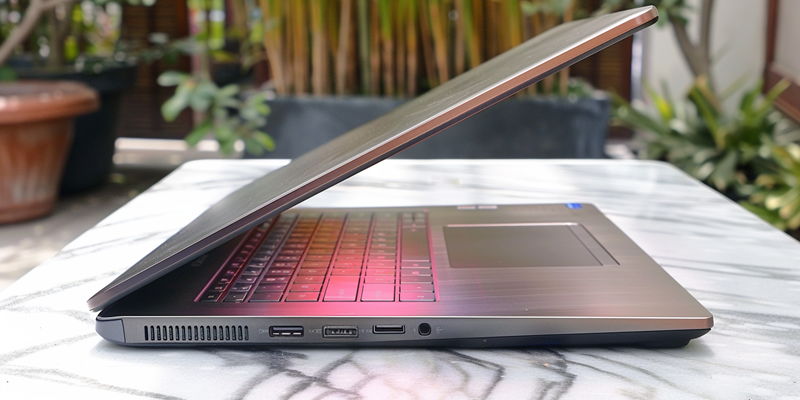The tech world buzzed with anticipation as Intel divulged plans for their newest processor series at Computex. CEO Pat Gelsinger unveiled the blueprints for Lunar Lake, a chip family poised to shake the foundations of the thin and light laptop market by the 2024 holiday season. Signifying more than a mere iterative update, Lunar Lake aims to leapfrog its predecessor, Meteor Lake, with claims of enhanced power efficiency and significant performance improvements.
With an eye on the portable computing horizon, Intel’s launch represents a pivotal stride in pushing the boundaries of what’s possible within the SoC realm. Beyond sheer might, Lunar Lake is trailblazing with its compliance with Microsoft’s emerging Copilot+ PC standards, promising a seamless synergy with intelligent computing futures that demand more than raw processing power.
The Next Generation SoC: Lunar Lake’s Advancements
Power Efficiency and Performance Cores
Intel’s commitment to power thriftiness is encapsulated in the novel hybrid core architecture of Lion Cove performance cores paired with Skymont efficiency cores. This duo promises to deliver the performance of the current Meteor Lake chips while sipping just a fraction of the power – all without the controversies associated with hyperthreading. The optimized Lion Cove cores are tasked with heavy lifting to ensure that—even without hyperthreading—efficiency doesn’t falter, potentially offering a paradigm shift in our expectations from mobile processing.
These advancements don’t live in a vacuum. They’re part of a concerted effort to endow Lunar Lake with unparalleled power efficiency, a parameter that’s increasingly crucial as laptops vie for all-day battery life.
Graphics and Neural Processing Jump
When it comes to visual prowess, the anticipated 50% increase in graphics performance from the new Intel Arc GPU, sporting next-gen Arc Battlemage architecture, represents a substantial uplift for gamers and professional creatives alike. Pair this with the whopping fourfold boost in Neural Processing Unit (NPU) capabilities, and Lunar Lake emerges as a powerhouse adept at handling the AI and machine learning tasks that are becoming standard in modern computing applications.
The promise of a 48 TOPS performance from the Intel NPU 4 neural processor, along with the collective computational power of 120 TOPS integrating GPU, NPU, and CPU performance, underlines Intel’s foray into a realm that extends well beyond traditional processing tasks.
Architectural Innovations Unveiled
Instruction Processing and Cache Memory Enhancements
Intel has left no stone unturned in refining the architecture of Lunar Lake. Look under the hood, and you’ll find meticulously reworked CPU instruction processing pathways alongside a fresh layer of cache memory, both working in tandem to ensure that every watt of power translates into tangible, snappy performance. These adjustments don’t just promise a boost in speed; they anticipate a future where energy efficiency is king.
In this scenario, Lunar Lake stands to offer unprecedented leaps in system performance, making multitasking and demanding computational tasks feel effortless without draining battery reserves.
Balance in Core Allocation
Doubling down on the efficiency cores compared to its predecessor, Meteor Lake, Intel’s strategy suggests a significant allocation shift. These efficiency cores, now matured and capable, are expected to take on an expanded role, potentially shouldering tasks traditionally reserved for performance cores. The result? A better-balanced system that optimizes for energy saving without compromising on capabilities, positioning Lunar Lake to be a viable competitor to ARM-based machines from the likes of Qualcomm and Apple.
Competitive Edge in the AI Era
Meeting Microsoft’s Copilot+ PC Standards
For the first time, an Intel chip meets the exacting Microsoft Copilot+ PC standards, which mandate over 40 TOPS for the Neural Processing Unit (NPU) and a minimum of 16GB memory. This benchmark underlines Intel’s agenda to align with the burgeoning domain of AI and advanced computing requirements. Such compliance ensures that future Lunar Lake-powered devices will not just be advancing in step with software evolution but could potentially spearhead the drive towards more AI-centric computing experiences.
A Rival to ARM-based Devices?
Could Lunar Lake be the David to the ARM-based Goliaths of the industry? With the enhancements promising to uplift Intel’s efficiency, the comparison seems less of a far-fetched dream and more a likely future reality. As ARM devices like Qualcomm’s Snapdragon and Apple’s M-series chips continue to set standards in power-efficient performance, Intel’s Lunar Lake launches an audacious bid for supremacy in this space. The success of Lunar Lake could signal a shift in market dynamics, positioning Intel not just as a competitor but as a potential leader in the AI-driven PC marketplace.
A Glimpse into Intel’s Optimistic Future
Integration with Upcoming Technologies
To propel their Lunar Lake chips into the stratosphere of relevance, Intel plans to interlock its capabilities with the Windows Copilot+ Runtime and other developer-focused APIs. This ecosystem approach not only aims to enhance the efficiencies of AI applications but provides developers with the tools necessary to push the envelope of what’s possible on a laptop, effectively turning a new page in the annals of smart computing.
Pre-Launch Demonstrations and Expectations
Intel is doubling down on energy efficiency with its groundbreaking hybrid core design, which marries Lion Cove performance cores with Skymont efficiency cores. This innovative pairing aims to match the performance benchmarks set by Meteor Lake chips, while dramatically reducing energy consumption – sidestepping the controversial hyperthreading issue entirely. The sharpened Lion Cove cores carry the burden of demanding tasks, ensuring that the system remains efficient even in the absence of hyperthreading. This could fundamentally change what we expect from mobile processors.
But this is not happening in isolation. It’s a deliberate strategy to give the upcoming Lunar Lake an edge in power efficiency. This is a vital focus at a time when laptops compete fiercely over the promise of lasting an entire day on a single charge. With Lunar Lake, Intel is reshaping the landscape of mobile computing, delivering powerhouse performance that doesn’t come at the expense of battery life.

